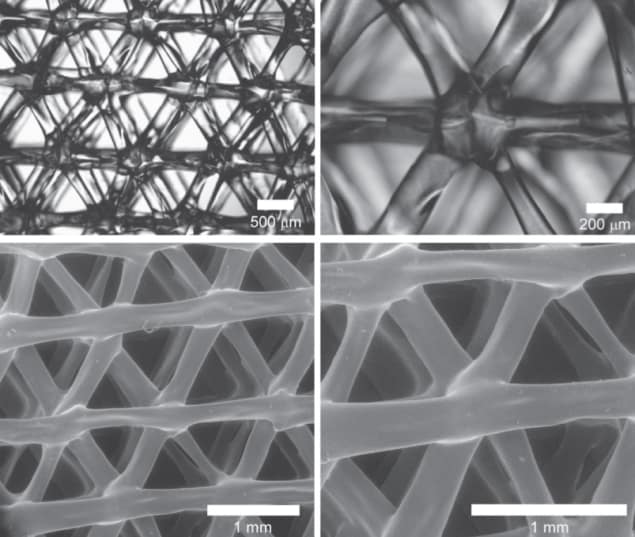
3D printing opens the door to the engineering of complex tissues, but its success depends on making the right materials available to developers. When printing any material, one of the challenges is to match the material properties to the printing process.
“For extrusion-based printing, the ink must flow during printing and then be rapidly stabilized after extrusion to maintain the desired print structure,” explains Jason Burdick of the University of Pennsylvania’s Department of Bioengineering.
Burdick‘s team – which includes researchers Yi-Cheun Yeh, Christopher Highley and Liliang Ouyang – is looking to expand the number of materials that can be 3D printed, particularly elastomers. These flexible polymers are needed by developers to better match the mechanical properties of tissue-repair scaffolds to the elasticity of target locations in the body. In addition, the deformable designs must be strong enough to withstand cyclic loading, which is essential for scaffolds targeting the repair of certain parts of the body, such cardiac tissue or cartilage.
In a recent study, published in the journal Biofabrication, Burdick’s group carefully altered the viscosity of a biocompatible elastomer so that it could be extruded during printing. At the same time, the scientists formulated their ink to ensure that the material could still be cured effectively with light. If the viscosity was too low, the ink would run too rapidly – which would compromise the fixing stage of the process.
Tests showed that the printed filaments supported cell growth and proliferation.

3D printing yields customized spinal implants
“Until this study, there were few examples of 3D printed elastomers, so it was encouraging to show that photocurable acrylated polyglycerol sebacate is a promising material for the fabrication of elastomeric scaffolds for biomedical applications,” said Burdick. “We hope that other groups will be inspired by the work to print new materials and to find new applications for 3D printed structures.”
Back in the lab, the team has followed up on its study by printing elastomers using additional cross-linking processes to give further control over the material properties.
- This article is one of a series of reports reviewing progress on high-impact research originally published in the IOP Publishing journal Biofabrication.



